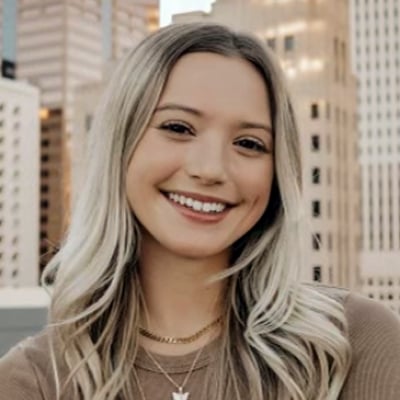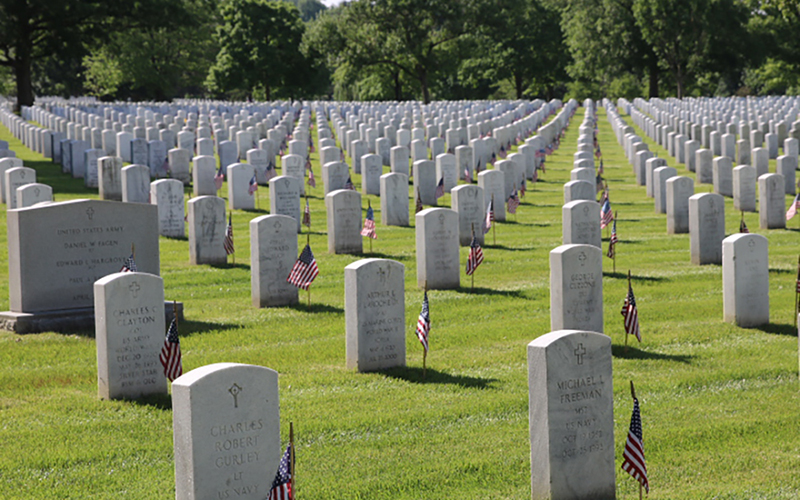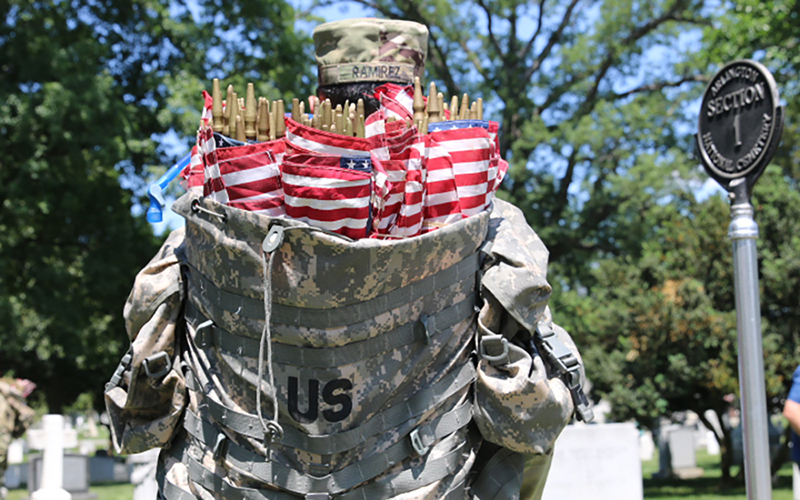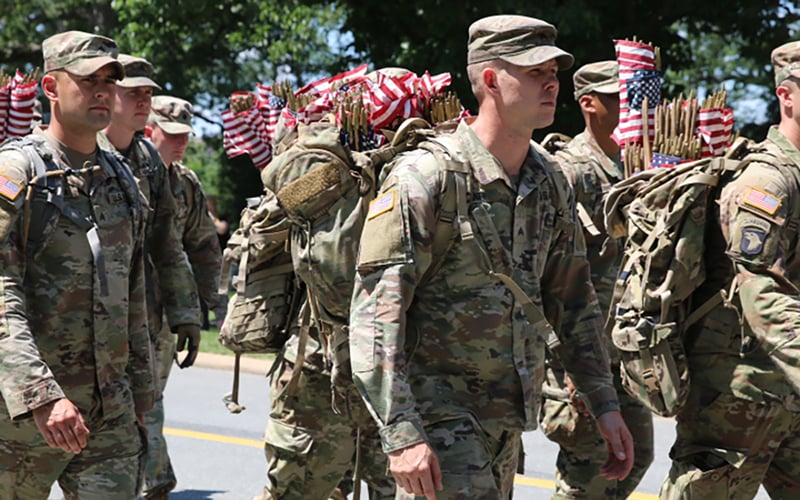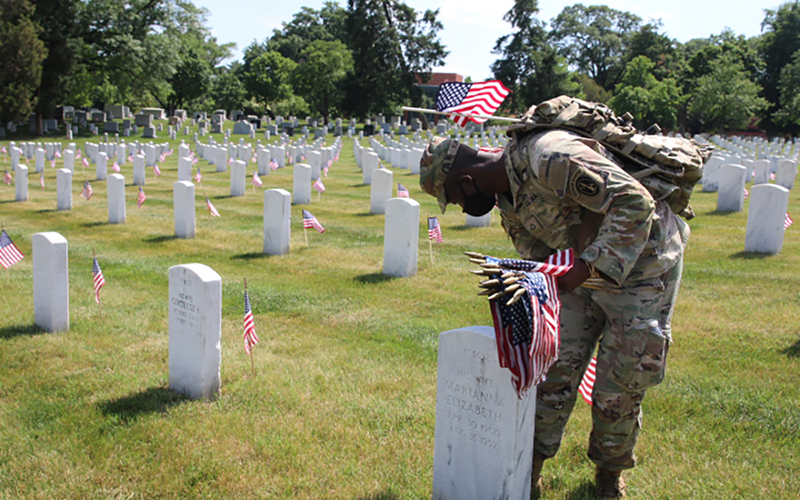WASHINGTON – Memorial Day was tougher than usual last year for Navy veteran Christine Martinez, who was not able to observe the day as she normally would because of COVID-19 restrictions.
“It was mentally difficult not being able to come together last year – especially as so many staff and faculty are veterans or come from military families,” said Martinez, a Litchfield Park resident and military outreach manager at the University of Phoenix.
“So, this was a sort of homecoming to remind and educate others on the importance of Memorial Day,” she said of a 10,000-flag display she took part in last week.
It was just one of the many Memorial Day ceremonies scheduled to be held in person around the state, and nation, this year as the pandemic is waning and the health restrictions that forced remote observances last year are being lifted.
At the National Memorial Cemetery of Arizona officials provided American flags for the last week to any visitors who wished to place one on a gravesite. The north Phoenix cemetery prohibited in-person memorial events last year to comply with health protocols from the Centers for Disease Control and Prevention.
“Last year we couldn’t have mass flag placing. The public wanted it, but CDC guidance would just not allow it,” said Les’ Melnyk, spokesperson for the National Cemetery Administration. “We’re happy to return to it.”
Along with the National Memorial Cemetery, the Arizona Veterans’ Memorial Cemeteries in Sierra Vista, Marana and Flagstaff also resumed flag-placing events this year, which are open to the public. The cemeteries held staff-led mass flag placing events leading up to the holiday, and welcomed members of the public to place their own flags.
Cemeteries are not the only ones taking advantage of the looser health restrictions and an opportunity to return to tradition. Riders USA expected to resume its annual “Flags for our Fallen” event, with members riding their motorcycles to the National Memorial Cemetery where they planned to place 500 flags at North Cave Creek and East Pinnacle Peak roads.
“I think it means the world to the families of these veterans to see that people are out at the cemetery, and that people care,” said Mike Sullivan, vice president of the group.
COVID-19 restrictions last year also forced a scaled-back “flags-in” ceremony at Arlington National Cemetery, where soldiers every year volunteer to place small American flags on more than 260,000 graves ahead of Memorial Day.
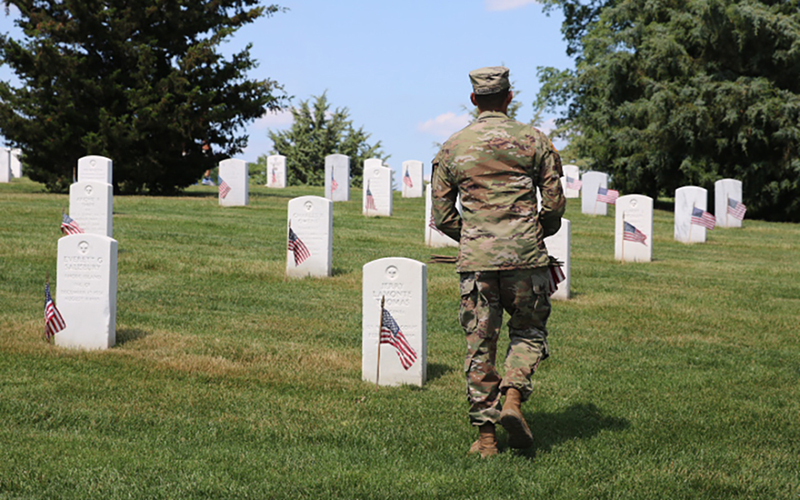
Civilian and military volunteers have been coming to Arlington National Cemetery for 51 years now to plant flags ahead of Memorial Day. (Photo by Brooke Newman/Cronkite News)
The ceremony was back in full force this year, a change welcomed by Army Maj. Steven Spalding, a Tucson native.
“I am grateful for the fact we get to be able to do this in full force, and honor our fallen from past and present,” Spalding said Thursday at the event.
He joined nearly 1,000 soldiers Thursday as they walked down rows of headstones, methodically planting flags on the graves. A cemetery fact sheet said it takes 1,200 volunteers – both soldiers and civilians – four hours to complete the flags-in ceremony, now in its 51st year.
Sgt. Ashley Oldenburg, who regularly volunteers for flags-in at Arlington, said this year’s return to tradition also brought the return of families, which she finds touching.
“I am always moved by seeing family members bring children or lay out blankets to honor their loved ones. It reminds me of how grateful I am to do something to honor those who have died,” she said.
In Phoenix, families were able to visit the tributes set up by Martinez and her office. That included 10,000 flags spelling out “Always Remember” – the theme for this year’s commemoration – and “tribute towers” that included pictures and memories of those who died.
“I have met so many amazing families this week, parents, cousins, siblings, spouses, grandparents, aunts and uncles of those who gave all,” Martinez said.
She called this year’s in-person events a welcome change from last year’s ceremonies.
“No amount of virtual gatherings can compare to shaking a hand or giving a hug to say, we acknowledge you too paid a price,” Martinez said. “We remember your family’s sacrifice.”
